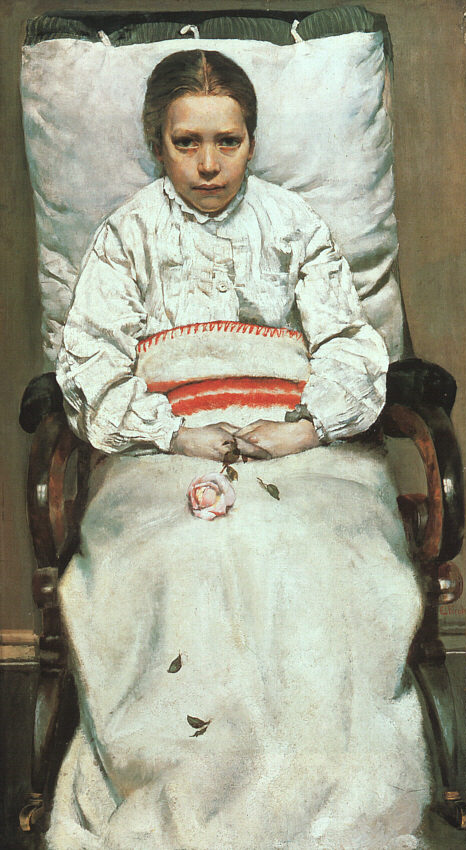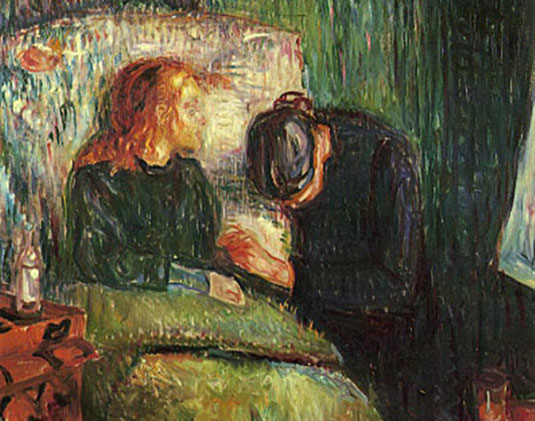
There is a form of medical treatment out there called "homeopathy." The idea behind this form of treatment is to take normally toxic substances like mercury, dilute them in a tablet or solvent like water, and give them to sick patients in hopes of stimulating the body to heal. As questionable as this idea sounds, it was designed to replace bloodletting, which involved bleeding patients in hopes of removing the sickness.
Nevertheless, sickness was a common theme in both versions of The Sick Girl. Both involve a sick girl in bed, patiently awaiting treatment. The earlier version, painted by Christian Krogh in 1880, took a direct approach to the idea. We view the girl head-on; she is sitting in a chair, with a somewhat tired expression on her face. The yellowed hue of her garment and sheets suggests that she has been hospitalized for quite some time. (Interestingly, it was around this time that laundry detergent was invented, allowing for easier cleaning of clothing.) More ominous, however, is the rose that the girl is holding in her hands: it has begun losing its leaves, and will likely begin losing its petals before long. Flowers rarely last more than two days, so the girl could die very soon.
Edvard Munch, a mentee of Krogh, painted a work that was also called The Sick Girl. This one also features a sick girl (in bed this time), but she is not the main focus of this work.

The first part that catches our eye is the grieving mother at the girl's side. She is clearly devastated by her daughter's illness, and is struggling to contemplate how she will continue to live without her daughter at her side. The pale child looks on, unable to understand her mother's pain. Her expression suggests that she has not experienced the death of anyone close to her as of yet.
These two works as a whole represent the increase in child mortality at this time as industrialization continued over most of Europe. Along with traditional and homeopathic treatments, the increasing effects of pollution likely had an effect on the young and old, like the young girls featured in these works. Indeed, Edvard Munch lost most of his close family to illnesses like tuberculosis, and he himself was gravely ill.
No comments:
Post a Comment